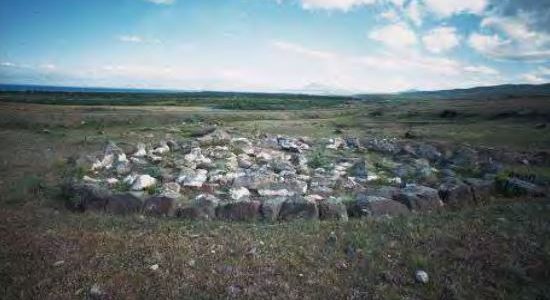
Location, structure and history: These sites are situated 12km south-east of the town of Gavar, to the left of the Gavar-Martuni highway on the Western side of Lake Sevan in the administrative area of the village of Karmirgyugh 8,5km to the south-east. The fort is situated on a large cape plateau covering an area of about 30ha, surrounded by Lake Sevan on 3 sides. The area is occupied by ruins of a large Medieval village named Qanagegh or Manuchari Dolakner. The traces of the Cyclopean wall can be observed at the north-west of the castle, then they turn to the West and then to the South with a total length of 900m. The remainder of the fort-settlement is not surrounded with a wall due to its inaccessibility being extremely steep and stony. All three small gorges situated here could serve as intervention locations and are covered with a 3-layer wall from one side of the lake to the other. Ruins of 7 towers of different form and size can be seen from the outer side of the walls. Four are semicircle, most probably reconstructed in a later time period, and 3 are square. The road entering the fort comes from the West and is encircled with a wall on two sides coming close to the citadel. The citadel here is quite small and looks like a separate construction built on a high place. Traces of housing can be seen in the north-west of the fort and in the environs. The watchtower is situated 2km South from these traces, on a rocky hill and is actually another smaller fort. The Qanagegh ancient settlement also includes about 50 burial places of which the bigger ones (9 mausoleums) make a separate group in the South. In 1999-2002 some exploration activities were organised at the mausoleums by the Institute of Archaeology and Ethnography.
The cromlech radius of the burial hills runs up to 15m. Very interesting samples of living culture (pottery, metal objects, various glass beads, doublewing moulds for jewellery, loam mold, hematite metanic stamp) of the last quarter of the 15c and first half of the 14c. B.C. have been found in mausoleum N3 with its 3 burial chambers. Judging from the burial ceremony implemented here and the remains of the items found it can be assumed that the owner of this grave was a metal works master with a high social position.